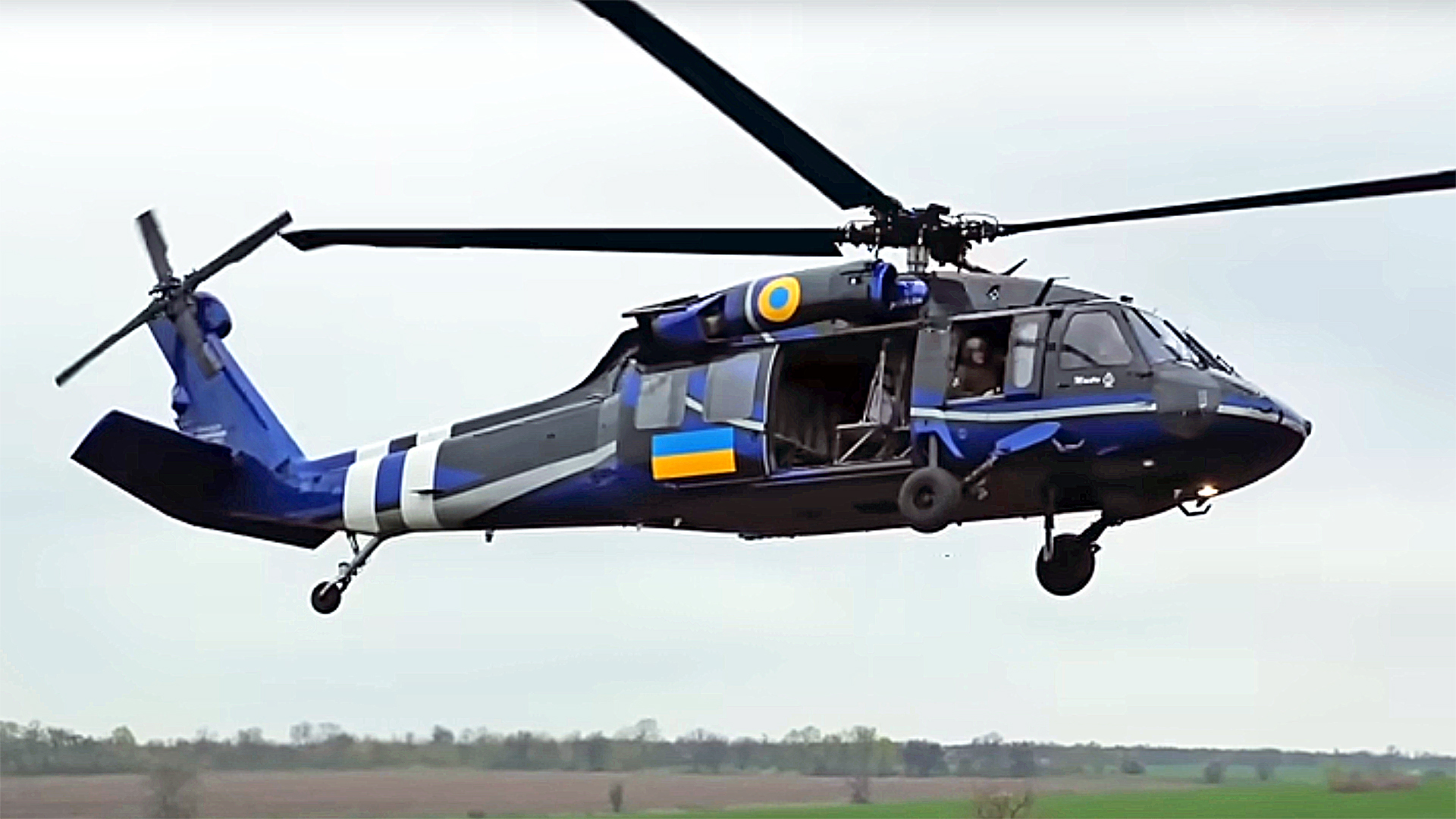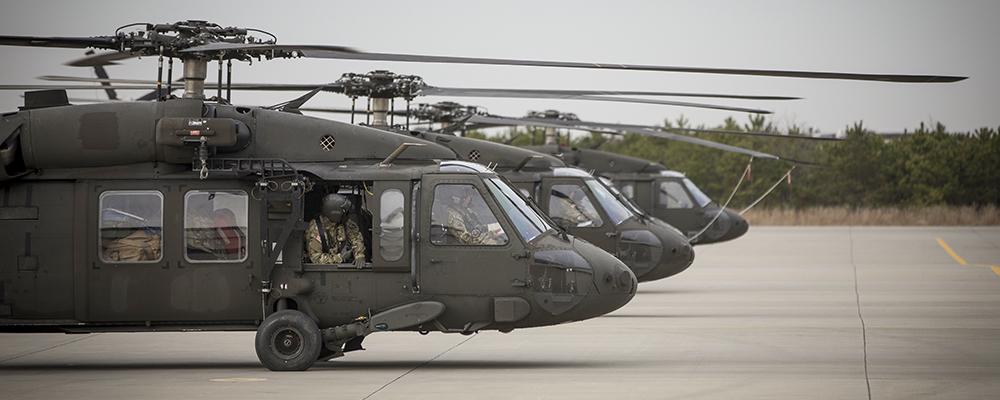The UH 60: Exploring Its Role in Modern Military Operations and Versatility
The UH 60: Exploring Its Role in Modern Military Operations and Versatility
Blog Article
Exploring the Background and Evolution of the UH 60 Helicopter

Beginnings of the UH-60
The beginnings of the UH-60 helicopter can be traced back to the late 1960s, a period noted by the demand for a flexible energy aircraft that might adjust to the evolving needs of modern-day warfare. The united state Military acknowledged the necessity for a substitute for the older UH-1 Iroquois, which was becoming significantly insufficient for the complexities of modern battle scenarios. In 1967, the Military started the Utility Tactical Transportation Airplane System (UTTAS) program, which looked for to create a multi-role helicopter with the ability of numerous goals, consisting of troop transport, medical evacuation, and logistical assistance.
The layout competition drew in a number of aerospace suppliers, yet it was Sikorsky Airplane Firm that eventually secured the contract in 1972. The UH-60 Black Hawk was presented, showcasing innovative layout aspects and progressed modern technology that set it apart from its predecessors. Its first trip took place in 1974, and the aircraft was officially adopted by the Army in 1979. The UH-60 swiftly obtained recognition for its robust performance, dependability, and flexibility, leading the means for its substantial usage in armed forces procedures and strengthening its condition as a foundation of united state Military aviation.
Secret Style Attributes
Cutting-edge design functions of the UH-60 Black Hawk dramatically add to its operational efficiency. Among one of the most noteworthy aspects is its twin-engine configuration, which improves dependability and provides a higher power-to-weight ratio, enabling the helicopter to do under different problems. The airplane's four-blade primary rotor system provides improved lift and maneuverability, essential for tactical objectives.

Furthermore, the cockpit is designed for optimum presence and functional designs, featuring sophisticated avionics that enhance pilot procedures. The modular style of the UH-60 allows for easy upkeep and adaptability, making it suitable for numerous mission profiles, from army transportation to medevac procedures. These key design features ensure that the UH-60 Black Hawk remains a versatile and dependable asset in armed forces air travel, with the ability of meeting the demands of modern-day war.
Technical Advancements
Current technological improvements in the UH-60 Black Hawk have substantially boosted its functional abilities and flexibility. The integration of innovative avionics, such as digital flight control systems and enhanced situational understanding screens, enables pilots to operate with enhanced precision and effectiveness. These systems help with boosted navigating, communication, and information sharing, enabling the helicopter to work successfully in varied settings.
Additionally, the introduction of composite products has lowered the overall weight of the airplane while preserving structural honesty. This decrease enhances gas effectiveness and extends operational range. The unification of innovative blades technology, including the usage of four-blade, fully articulated rotor systems, has actually enhanced lift performance and maneuverability, allowing for far better handling in different flight conditions.

In addition, improvements in propulsion systems, such as the T700-GE-701D engines, have actually raised power result and dependability - uh 60. These engines add to premium efficiency in hot-weather and high-altitude problems
Last but not least, the combination of self-defense systems and improved sensor bundles boosts the Black Hawk's survivability and mission effectiveness. Jointly, these technological renovations ensure that the UH-60 Black Hawk continues to be a vital possession in modern aeronautics, capable of adapting to the evolving demands of army and humanitarian missions.
Duty in Military Procedures
As the foundation of U.S. Army aviation, the UH-60 helicopter plays a critical duty in various armed forces operations, offering as a flexible system for fight assistance, transport, and medevac goals - uh 60. Its design includes the capability to run in diverse settings, making it essential for troop activity and logistical support in both non-traditional and conventional war

In check my site clinical evacuation circumstances, the UH-60 has actually verified invaluable, substantially decreasing the moment to transfer damaged soldiers from the field of battle to medical facilities. Its innovative avionics and evening vision capacities further ensure mission success under challenging problems. Overall, the UH-60 helicopter stays an important property, continuously adjusting to satisfy the progressing needs of armed forces procedures and improving the performance of U.S. pressures worldwide.
Future of the UH-60
Looking ahead, the future of the UH-60 helicopter entails considerable innovations in technology and capacities made to boost its functional efficiency. As military operations advance, the UH-60 is expected to incorporate innovative modern technologies, including boosted avionics, boosted tools systems, and advanced communication devices. These improvements will permit greater situational recognition and mission versatility, ensuring that the UH-60 continues to be a vital asset on the battleground.
One notable growth is the integration of fly-by-wire systems, which will boost flight control precision and lower pilot workload. Furthermore, efforts to update the airframe and engines intend to raise array, rate, and haul ability, therefore increasing the helicopter's functional range (uh 60).
The future likewise holds assurance for enhanced interoperability with unmanned aerial systems (UAS), making it possible for coordinated goals that take advantage of both manned and unmanned capacities. Additionally, the unification of expert system and maker discovering could optimize trip dynamics and upkeep procedures, bring about reduced operational costs.
Verdict
The UH-60 Black Hawk helicopter stands for a considerable achievement in armed forces aeronautics, developing from the U.S. Army's first requirements for a versatile energy airplane. Its innovative layout features and continuous technical developments have guaranteed its importance in different military operations over the decades. As the demands of modern-day warfare modification, the future of the UH-60 will likely include more improvements and adaptations, enhancing its status as an essential asset for militaries worldwide.
The UH-60 Black Hawk helicopter stands for a considerable milestone in armed forces air travel, arising from the U.S. Army's quest for an extra trusted and flexible utility aircraft in the late 20th century.The beginnings of the UH-60 helicopter can be mapped back to the late 1960s, a sites period noted by the requirement for a flexible energy aircraft that could adapt to the evolving needs of modern warfare. In general, the UH-60 helicopter stays a crucial possession, continuously adjusting to fulfill the evolving needs of military procedures and boosting the efficiency of United state forces worldwide.
Looking ahead, the future of the UH-60 helicopter entails considerable improvements in innovation and capabilities designed to improve its operational performance.The UH-60 Black Hawk helicopter stands for a considerable More Bonuses success in armed forces air travel, progressing from the U.S. Military's initial requirements for a versatile energy aircraft.
Report this page